Cnidarians are water animals that have a simple, usually symmetrical, body with a mouth opening. Stinging cells on tentacles around the mouth catch prey. Cnidarians are either bell-shaped and mobile, like the jellyfish, or tubes anchored to one spot, like coral and sea anemones.
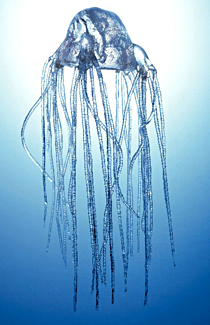
Jellyfish drift about in the ocean currents, trailing their tentacles through the water. They sting small animals with the cnidoblasts (stinging cells) on their tentacles and push the prey into their mouth. After digestion, waste passes out of their mouth.
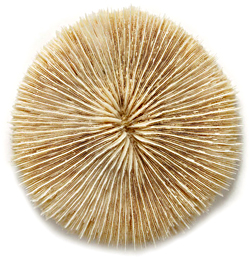
Most corals live in colonies, but mushroom corals form a single polyp (anchored tube) that may grow 50 cm (20 in) wide. Their hard skeleton is made of chalk (calcium carbonate). Coral skeletons often build up to form a reef.
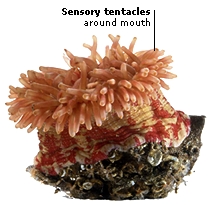
Sea anemones are commonly found in coastal rock pools. They catch fish and other small animals in their stinging tentacles. When the tide goes out, they survive out of water by pulling in their tentacles. This helps them to conserve water.
PHYLUM: CNIDARIA
Class: Anthozoa
Features: anchored polyp (tube-like) form, carnivorous (eat flesh), often in groups
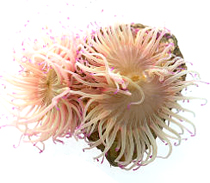
Class: Scyphozoa
Features: free-living, medusoid (bell-shaped) form, mouth on underside
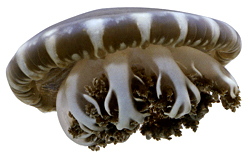
Class: Hydrozoa
Features: some free-living, others anchored, most in colonies (large groups), mostly carnivorous
Class: Cubozoa
Features: free-living, box-shaped medusoid form, with long tentacles from corners

No comments:
Post a Comment